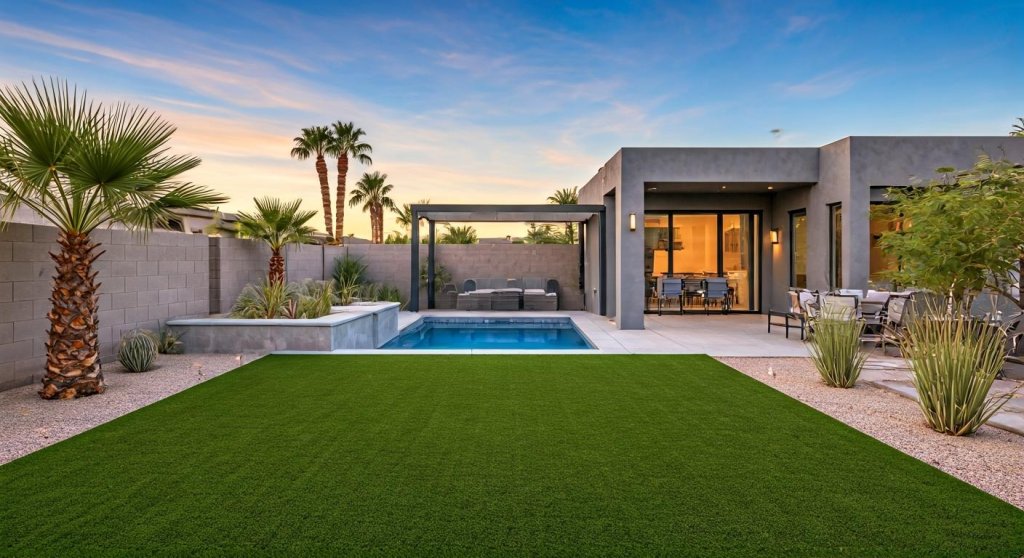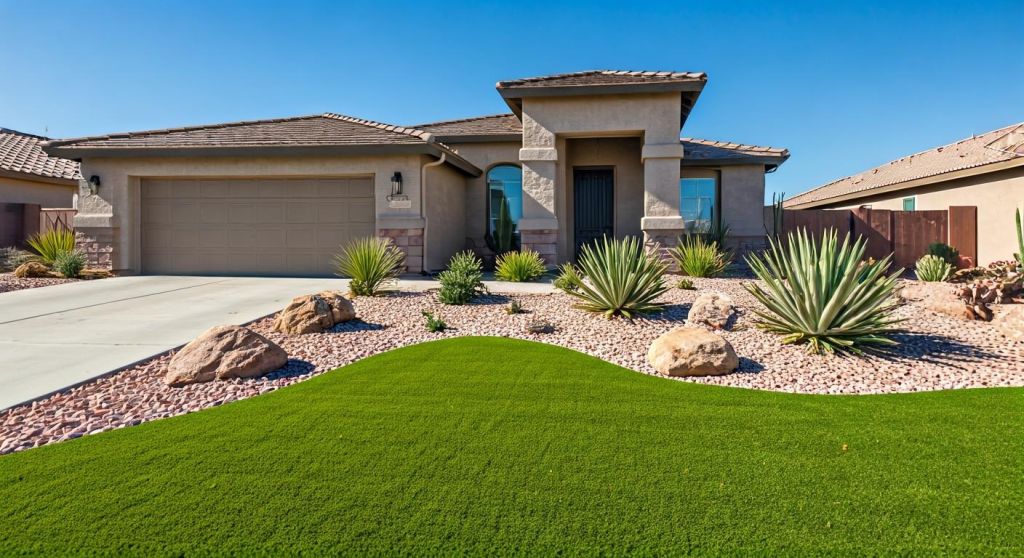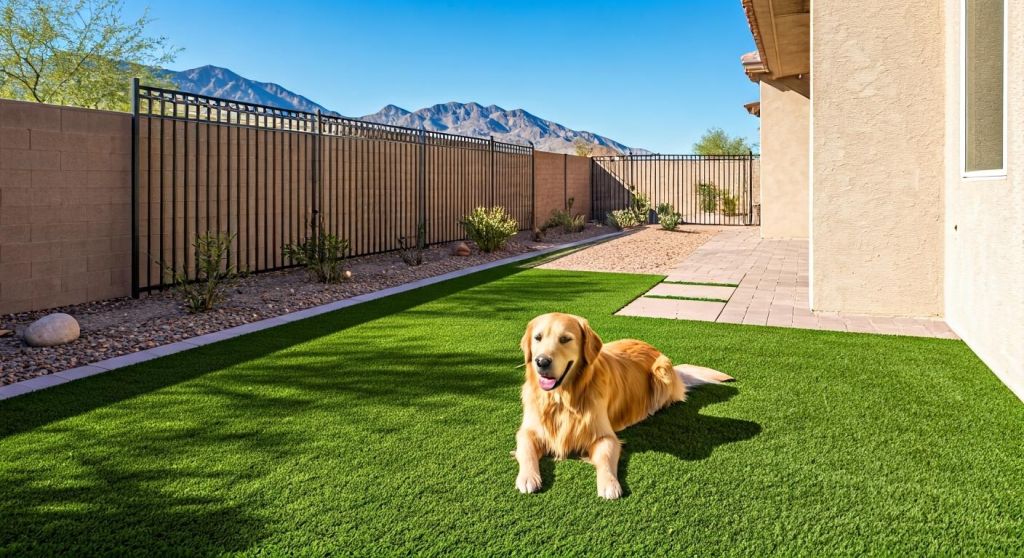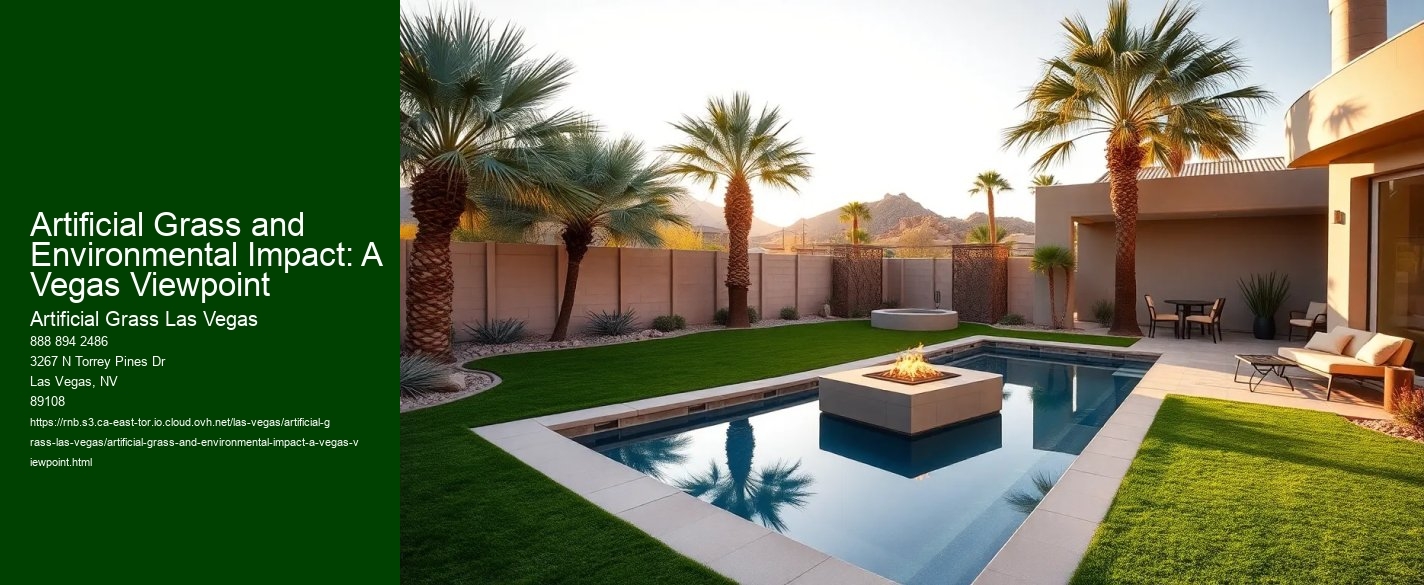Water Conservation in the Desert: A Crucial Factor
Okay, so, like, Artificial Grass and Environmental Impact: A Vegas Viewpoint, right? Quality Artificial Grass Vegas Nevada. It aint just about sprucing up your yard with some green stuff. You gotta think about the bigger picture, especially in a place like Vegas. Water Conservation in the Desert: A Crucial Factor. I mean, duh!
Las Vegas, bless its heart, is, well, a desert! Waters more precious than gold (almost, haha). So, when folks are considering turf, they gotta see if it genuinely helps conserve water. A lot of people think, "Oh, fake grass, no watering!" But its not that simple, is it?
See, you might not be watering it like real grass, but youre still using water to, yknow, cool it down during those blazing summer days. And, thats pretty important! Artificial Grass For Commercial Properties Las Vegas Nobody wants to barbecue on turf thats hotter than the surface of the sun, yikes!
Plus, youve gotta consider the entire life cycle. Manufacturing, transport, installation, and disposal. Is it truly saving resources in the long run, or is it just shifting the environmental burden elsewhere? That stuff matters! It doesnt not matter.
And get this, the desert ecosystem is delicate. Replacing natural vegetation with plastic (essentially, thats what it is) can disrupt local habitats. Birds, insects... they all rely on native plants! We shouldnt just ignore that, should we?
So, yeah, while artificial grass can seem like a water-saving solution in the scorching desert climate (and it can be, in some cases), its crucial to weigh all the environmental impacts. Dont just jump on the bandwagon cause your neighbor did. Do your homework, friend! Consider everything! Its not all sunshine and perfectly manicured lawns, ya know?! Whoa!
Heat Island Effect: Artificial Grass vs. Natural Turf
Alright, lets talk bout this whole artificial grass thing in Vegas, especially when it comes to that nasty heat island effect. You know, that phenomenon where urban areas get way hotter than surrounding rural land? Its a real issue here, what with all the concrete and asphalt!

Now, natural turf, thats your good old grass. It breathes, it transpires, it helps cool things down through evaporation. It aint perfect, needing water and maintenance, but its a natural coolant. Artificial grass, on the other hand, is basically plastic. It doesnt do any of that fancy cooling stuff. In fact, it absorbs heat and radiates it back out, makin things even hotter! (Yikes!)
Theres no denying it, artificial grass contributes to the heat island effect more than natural turf does. Studies have shown (or at least strongly suggest) this. It doesnt mean artificial grass is always the enemy, though. Maybe in some situations, like where water conservation is absolutely paramount (think severe drought conditions), its a necessary evil.
But lets not pretend its an environmentally neutral choice. It isnt.
Artificial Grass and Environmental Impact: A Vegas Viewpoint - Artificial Grass For Rv Parking Las Vegas
- Install Artificial Turf Near Me Las Vegas
- Las Vegas Artificial Grass Deals
- Las Vegas Synthetic Grass For Restaurants
The environmental impact of artificial grass in Vegas aint a simple black-and-white situation. Its a complex issue with pros and cons. But ignoring the heat island effect? Well, thats just burying our heads in the sand.
Recycling and Disposal Challenges in Las Vegas
When it comes to artificial grass and its environmental impact in Las Vegas, its not all sunshine and rainbows! Sure, synthetic turf might seem like an eco-friendly solution to water scarcity and high maintenance costs, but there are definitely recycling and disposal challenges that we cant ignore.
First off, the manufacturing process of artificial grass isnt exactly friendly to our planet. It requires a significant amount of non-renewable resources and energy. But hey, you cant have everything, right?

Now, lets talk about the end of its lifecycle. When artificial grass needs replacing, or if it gets damaged beyond repair, what happens next? Well, most of the time, it ends up in landfills! Thats because finding a reliable recycler for this type of material is pretty tough in Las Vegas. You just can't walk into any old recycling center and expect them to know how to handle this stuff!
But there are some people pushing back against this trend. Theyre experimenting with new technologies that could make artificial grass more recyclable in the future. These innovations might help, but until they become widely available and adopted, were left dealing with the current lack of solutions.
On top of that, not everyone agrees on the benefits of artificial grass. Some argue that it actually increases the urban heat island effect, making our already hot city even hotter. Ouch! So, while it might save water, it could be causing other environmental issues.
In short, while artificial grass presents some promising solutions to the unique challenges facing Las Vegas, its far from perfect when it comes to recycling and disposal. We need to keep innovating and looking for better ways to manage these materials! Ugh, sometimes it feels like were just treading water instead of making real progress!
Microplastics and Runoff: Concerns for the Vegas Wash
Artificial grass, once hailed as a water-wise alternative for our parched Vegas landscapes, aint without its own environmental baggage. One major worry brewing is the insidious combination of microplastics and runoff, really messing with the Vegas Wash.
See, that artificial turf, its basically plastic, right? Over time, especially under our relentless desert sun, it degrades.
Artificial Grass and Environmental Impact: A Vegas Viewpoint - Artificial Grass For Commercial Properties Las Vegas
- Las Vegas Artificial Grass Deals
- Las Vegas Synthetic Grass For Restaurants
- Las Vegas Artificial Turf For Hotels

The Vegas Wash, a crucial waterway feeding into Lake Mead (you know, our main water source!), becomes a highway for these pollutants. And its not just a visual problem, is it. These tiny plastics can absorb other nasty chemicals, making them even more toxic. Aquatic life ingests them, and, well, the whole food chain gets contaminated. Yikes!
We cant ignore the potential long-term consequences. No one wants these microplastics ending up in our drinking water or hurting the already fragile ecosystem. Weve got to think seriously about how we manage artificial grass and mitigate the risk of this microplastic pollution. Aint that the truth! Its not a simple solution, its a delicate balance of conservation and unintended consequences. We shouldnt just assume that it is okay!
The Role of Artificial Grass in Reducing Carbon Footprint
Artificial grass is becoming increasingly popular in Las Vegas, and for good reasons! One of the most compelling arguments for its use is its potential role in reducing our carbon footprint. While it may seem counterintuitive at first, when you dive deeper into the topic, youll see how this synthetic turf can actually benefit the environment.
First off, let's talk about water conservation. Vegas is known for its arid climate, and maintaining natural grass requires a hefty amount of water-something that's just not sustainable in a desert. With artificial grass, you won't need to water it at all. This alone can save thousands of gallons of water each year! (Thats a significant reduction in water usage that contributes to a lower carbon footprint).
Moreover, think about the maintenance involved with natural lawns. Mowing, fertilizing, and using pesticides all contribute to greenhouse gas emissions. When you switch to artificial grass, you eliminate the need for gas-powered lawnmowers and chemical treatments. So, you're not just saving water; you're also cutting down on harmful emissions that come from lawn maintenance. It's a win-win situation!
But it's not just about the immediate savings. The production of artificial grass has also improved over the years. Many manufacturers are focusing on sustainability, using recycled materials and eco-friendly processes. This means that, while it may take energy to produce the turf, the overall impact can be significantly lower than traditional grass, particularly in areas like Vegas where water and chemical usage are high.
Now, some folks might argue that artificial grass isn't a perfect solution. They might say it can't absorb carbon like natural grass does. Sure, there's some truth there, but let's not forget the bigger picture. In a place where water is scarce and emissions from lawn care are a concern, artificial grass can play a crucial role in creating a more sustainable environment.
In conclusion, while it's not a one-size-fits-all solution, artificial grass serves as a valuable tool in our quest to reduce our carbon footprint, especially in the unique climate of Las Vegas. By conserving water, reducing emissions, and utilizing sustainable production methods, synthetic turf can be an eco-friendly alternative that aligns with our environmental goals. So, why not consider it?
Local Regulations and Incentives for Sustainable Landscaping
In the vibrant city of Las Vegas, where the sun shines relentlessly and the desert landscape dominates, the conversation around sustainable landscaping has taken on new urgency. Local regulations and incentives related to artificial grass are becoming increasingly significant, especially when considering the environmental impact. It's not just about aesthetics; it's about creating a balance between beauty and ecological responsibility!
First off, it's important to mention that while artificial grass is often seen as a solution to the water crisis in Southern Nevada, it's not without its drawbacks. The local government has actually encouraged the use of synthetic turf by offering rebates and incentives for homeowners who replace their natural lawns. However, these regulations don't just stop at financial incentives. There are guidelines in place that dictate where and how artificial grass can be installed. For instance, some neighborhoods have restrictions on the type of materials that can be used, aiming to maintain a certain aesthetic standard.
Moreover, residents have mixed feelings about these regulations. On one hand, they appreciate the effort to promote water conservation, which is crucial in a desert climate. On the other hand, there are concerns about the long-term impacts of synthetic materials on local wildlife and soil health. It's clear that not everyone is on board with the idea of plastic grass, as some argue it doesn't provide the same ecological benefits as natural landscaping.
Incentives can also extend beyond just the removal of natural grass. Many local organizations are promoting native plant landscaping as a sustainable alternative that supports local ecosystems. These initiatives often come with their own set of rebates, making it easier for residents to make environmentally-friendly choices. Yet, the question remains: is artificial grass really the best choice for sustainability, or are we just trading one problem for another?
In conclusion, the local regulations and incentives surrounding artificial grass in Las Vegas reflect a complex interplay between environmental concerns and aesthetic preferences. While there's no denying that artificial turf can save water, it's essential to consider its broader implications. So, as the city continues to grow and evolve, let's hope that we can strike a balance that respects both our environment and our desire for beautiful landscapes!
Aesthetic Preferences and Environmental Trade-offs: Balancing Act
Aesthetic Preferences and Environmental Trade-offs: Balancing Act
Artificial grass in Vegas, huh? Its a real head-scratcher, aint it? People love the look, that perfect, always-green carpet, especially cause the desert aint exactly known for lush lawns. So, yknow, aesthetic preferences? Totally understandable.
But, and this is a big but, (pun intended!), we gotta think bout the environmental impact. It aint just about how pretty it looks. Were talkin plastic, potentially leaching chemicals, and, like, major heat absorption. Real grass, even in a water-challenged place like Vegas, does provide a cooling effect, something that artificial stuff just doesnt do. Imagine walkin barefoot on that stuff in July! Ouch!
So, what do we do? Do we just say "no way" to fake grass? Well, not necessarily. Maybe theres a compromise. Perhaps smaller areas, or utilizing newer, more eco-friendly (supposedly!) versions. The key is, we mustnt ignore the trade-offs. We cant just go for the easy, pretty option without considering the consequences. Its a balancing act, and frankly, its not an easy one! Were talkin about water conservation versus potential pollution, visual appeal versus ecological wellbeing. Its a real ethical dilemma, I tell ya!







